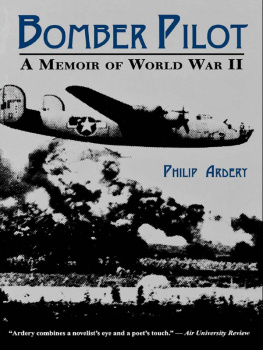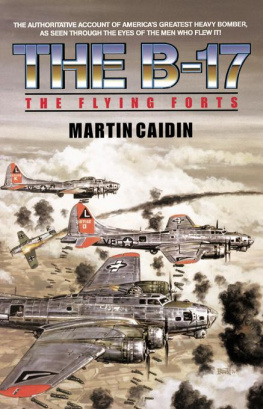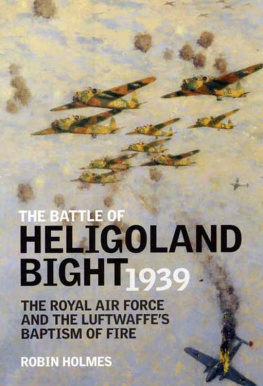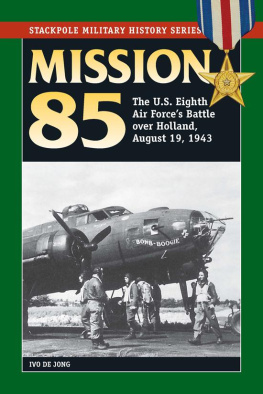
The Mighty Eighth in WWII
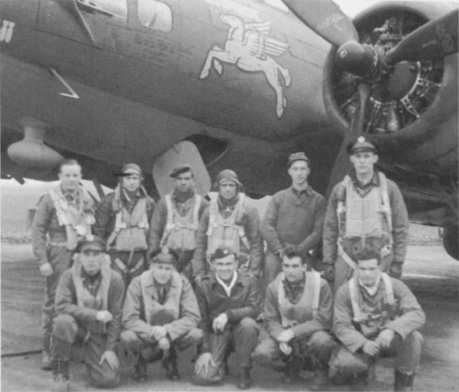
The Mighty Eighth in WWII

A Memoir
Brig. Gen. J. Kemp McLaughlin USAFR (Ret.)
THE UNIVERSITY PRESS OF KENTUCKY
Publication of this volume was made possible in part by a grant from the National
Endowment for the Humanities
Copyright 2000 by The University Press of Kentucky
Paperback edition 2006
Scholarly publisher for the Commonwealth, serving Bellarmine University, Berea College, Centre College of Kentucky, Eastern Kentucky University, The Filson Historical Society, Georgetown College, Kentucky Historical Society, Kentucky State University, Morehead State University, Murray State University, Northern Kentucky University, Transylvania University, University of Kentucky, University of Louisville, and Western Kentucky University.
All rights reserved.
Editorial and Sales Offices: The University Press of Kentucky
663 South Limestone Street, Lexington, Kentucky 40508-4008
www.kentuckypress.com
10 09 08 07 06 5 4 3 2
Frontispiece: The author and crew ready to lead the 1st Air Division on a raid in September 1943. Front, left to right, Lt. Ed T. OGrady, bombardier; F/O Tim Eaton, navigator; Capt. Henry A. Hughes, navigator; Col. William M. Reid, air commander; S/Sgt. Foley. Back, left to right, Lt. Young; S/Sgt. Brubaker; S/Sgt. Ford; S/Sgt. Van Horn; T/Sgt. Edison; Capt. Kemp McLaughlin. (U.S. Army Air Corps photo)
The Library of Congress has cataloged the hardcover edition as follows:
McLaughlin, J. Kemp, 1918
The Mighty Eighth in WWII: A Memoir / J. Kemp McLaughlin.
p. cm.
Includes index.
ISBN 0-8131-2178-7 (alk. paper)
1. United States. Army Air Forces. Air Force, 8th.History, 2. World War, 19391945Aerial operations, American. 3. McLaughlin, J. Kemp, 1918 . 4. World War, 19391945Personal narratives, American. 5. United States. Army Air Forces. Air Force, 8thBiography. I. Title: Mighty 8th in World War Two. II. Title: Mighty 8th in World War 2.
III. Title.
D790.M434 2000
940.544973092dc21
[B]
Paper ISBN-10 0-8131-9159-9
Paper ISBN-13 978-0-8131-9159-1 00-028305
This book is printed on acid-free recycled paper
meeting the requirements of the American National Standard
for Permanence of Paper for Printed Library Materials.

Manufactured in the United States of America

| Member of the Association of American University Presses |
This book is dedicated to Hugh Edward McLaughlin, who helped defeat Chief Cornstalk at the Battle of Point Pleasant, the opening battle of the American Revolution, and who fought with the Men of Augusta throughout that war. And to James Buchanan McLaughlin, Company C, 25th Virginia Infantry, C.S.A., who fought so valiantly with Stonewall Jackson and later with Robert E. Lee. And lastly to Elizabeth Harlow McLaughlin and James Blaine McLaughlin 11, who I hope will never have to endure another war.
Contents
Preface
W orld War II was by far the greatest event to have occurred in the twentieth century. Its great battles, in the air, on the ground, at sea, were felt in every nation and by nearly every living person. And so it was with me.
In 1941, I was a twenty-two-year-old college student, facing the draft and an almost certain war. Having earned a pilots license, I elected to try for the then budding U.S. Army Air Corps, for flying was great fun and the most appealing thing I had ever experienced.
This is the story of the events and the air combat that ensued from my enlistment in 1941 until my discharge from service in 1946. It is also my tale of some great and brave Americans who were my friends and comrades in arms in the European and the North African Theaters of Operations. The reader should bear in mind that much of what is related here is from memories of events of more than fifty years ago, and some dates, names, and times of events may be in error.
In trying to recall the specifics of events of a half century ago that comprise this narrative, I found myself turning at times to my friends and associates from the United States 8th Air Force and especially those of the 92nd Bombardment Group. I wish to thank Col. David Alford of Rising Star, Texas, William P. Edris of Kernersville, North Carolina, and Jack Spratt of Toledo, Ohio. Also John S. Sloan, to whose diary of the 92nd Bombardment Group I have referenced many times for facts and figures that I never could have obtained elsewhere. I also wish to thank Lt. Col. Lester Lennox, formerly of the 95th Bombardment Group, who wrote the book Assembling the Mighty Eighth, and who generously gave permission for its inclusion in the writing of my story. Additionally, I wish to thank Richard McKee for his encouragement and help in editing and bringing this book to fruition.

Baptism
I t began on a cool October morning in 1942 at Bovingdon Aerodrome, Hertfordshire, England. It seemed strangely quiet as the realization began to descend on me that I was about to embark on my first combat mission of World War II.
Before we left the States for England in August 1942, Col. James Sutton, our group commander, had briefed us at length on his version of how the air campaign against Germany would be conducted. He told us our B-17Fs were invincible, that with their firepower and ability to fly at higher altitudes the German air force would be no match for us. And lastly, that we could expect to be back home in six to ten months. We, of course, believed him.
While we were still in Bangor, Maine, he prepared us for what would be the first nonstop group flight to England. The 97th and 301st Bomb Groups, one of whom we had trained with at MacDill Field in Florida, had flown the route in a series of hops, from Gander, Newfoundland, to Greenland, then to Iceland, and on to Scotland, in July 1942 and had lost several of their planes. These losses were due to a lack of pilot experience and to a minimum amount of instrument-flying instruction. And, with the erratic, difficult-to-forecast weather conditions in the North Atlantic, our group commander knew that the same fate could easily befall us. B-17s were in such short supply in those days that it was almost unconscionable to lose even one from lack of planning.
Colonel Sutton had received permission from Gen. Henry H. Hap Arnold, commander of United States Army Air Forces, for our group to fly directly from Gander to Prestwick, Scotland, and avoid the precarious approaches and landings in the fjords en route. We had equipped each B-17 with an additional five hundred gallons of fuel, or about twelve hours of flying time. The distance was approximately two thousand miles, and with a cruising speed of about 185 miles per hour, we could make it with enough fuel left to get to an alternate destination if necessary. Since we had all flown lengthy cruise-control flights before this ocean-crossing flight, we knew for certain that none of our ships was a fuel hog.
All thirty-six of our groups airplanes flew to Prestwick without mishap and with the loss of only one engine en route: Lt. Charles Austin, the only other pilot from my hometown of Charleston, West Virginia, lost an engine in mid-ocean. In order to keep up with his squadron, he began to lighten his airplane by tossing overboard nonessential supplies. After several radio exchanges with his commander, he was asked if he carried any whiskey onboard. He finally admitted he did and was ordered to toss it overboard. Reluctantly he told his crew to throw overboard nine cases of bourbon whiskey. Twas a sad affair, for there was not a drop of bourbon to be found in all of England. After our successful attempt, all of the groups flying to the European Theater would make the direct flight.
Next page




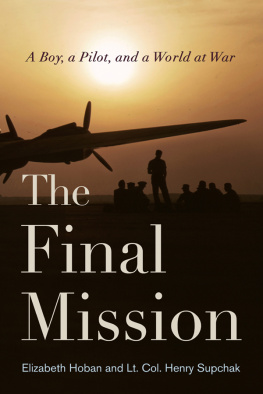
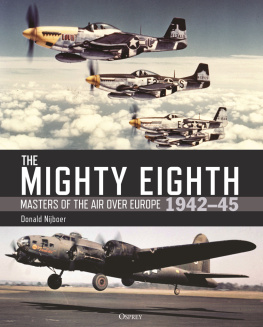
![Bar Wing Commander Guy P. Gibson VC DSO - Enemy Coast Ahead [Illustrated Edition]](/uploads/posts/book/180257/thumbs/bar-wing-commander-guy-p-gibson-vc-dso-enemy.jpg)
